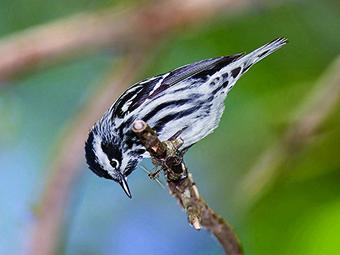
Black and White Warblers

Ruth Pfeffer, bird expert, photographer, “Birding with Ruth” walk leader
Humans aren’t the only visitors flocking to the Wissahickon at this time of year. They’re likely outnumbered by the black and white warbler. The males arrive from their winter homes in Mexico and Central America by about May 1 to start scoping out nesting territory, and the females generally follow a week or so later. The males may choose the neighborhood, but it’s the females who select the perfect nesting spot. Don’t expect to see the nests, though — these birds camouflage their nests well on the ground or on low tree stumps. Aptly named, the male birds have very streaked black and white heads, are about 4-1/2 inches long and sing a high-pitched “weesy, weesy, weesy” song that lasts about three seconds.
